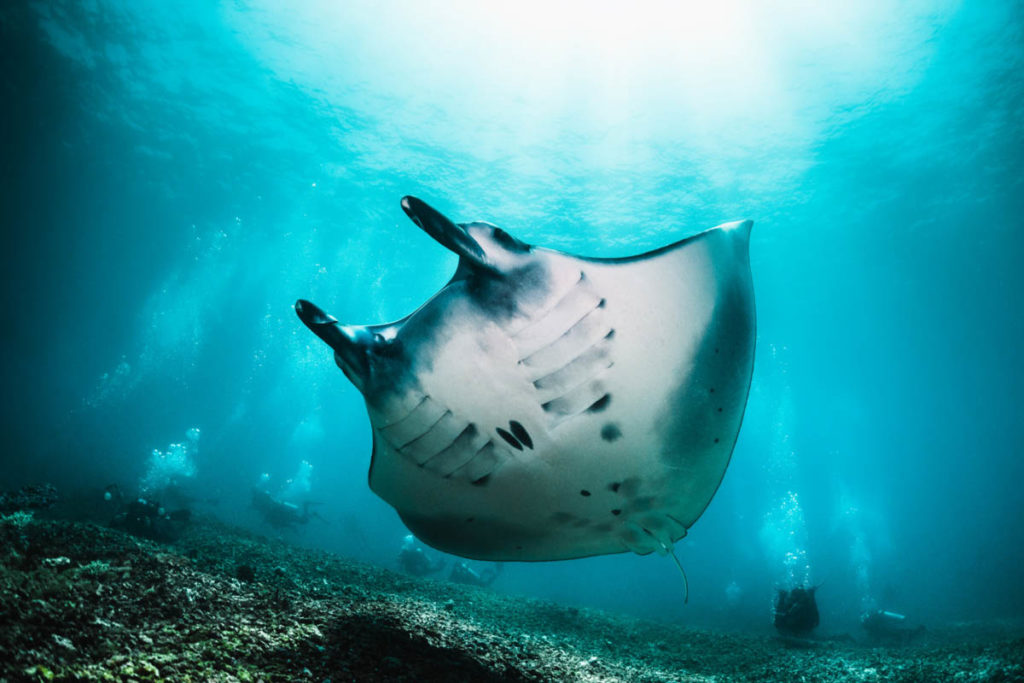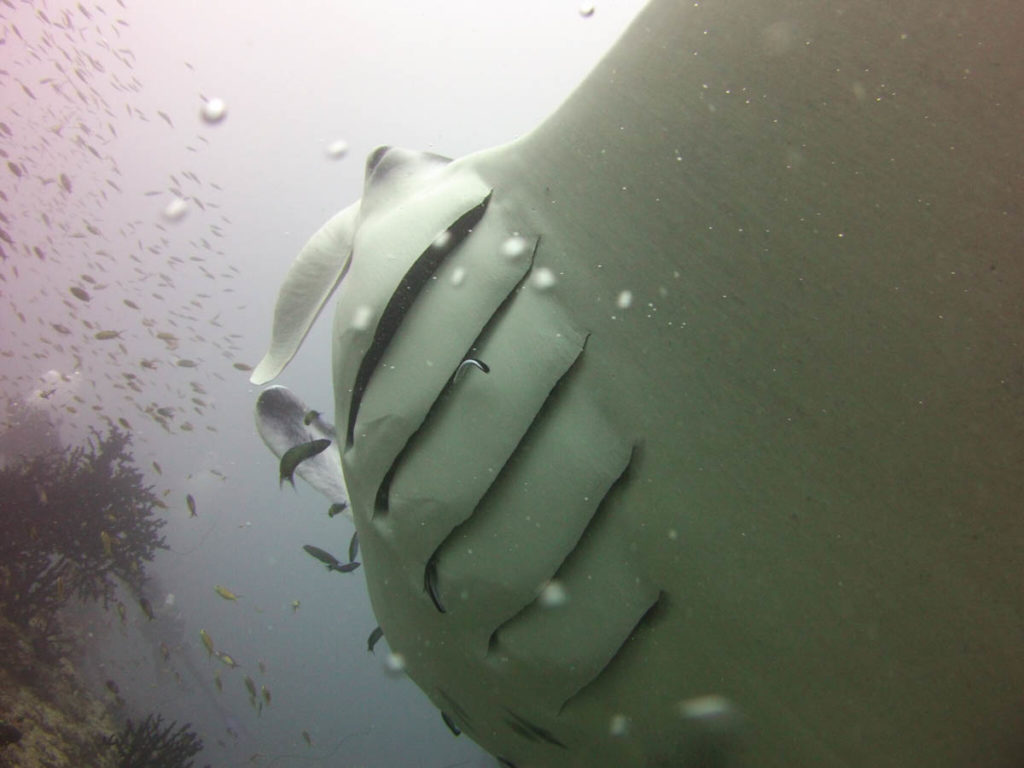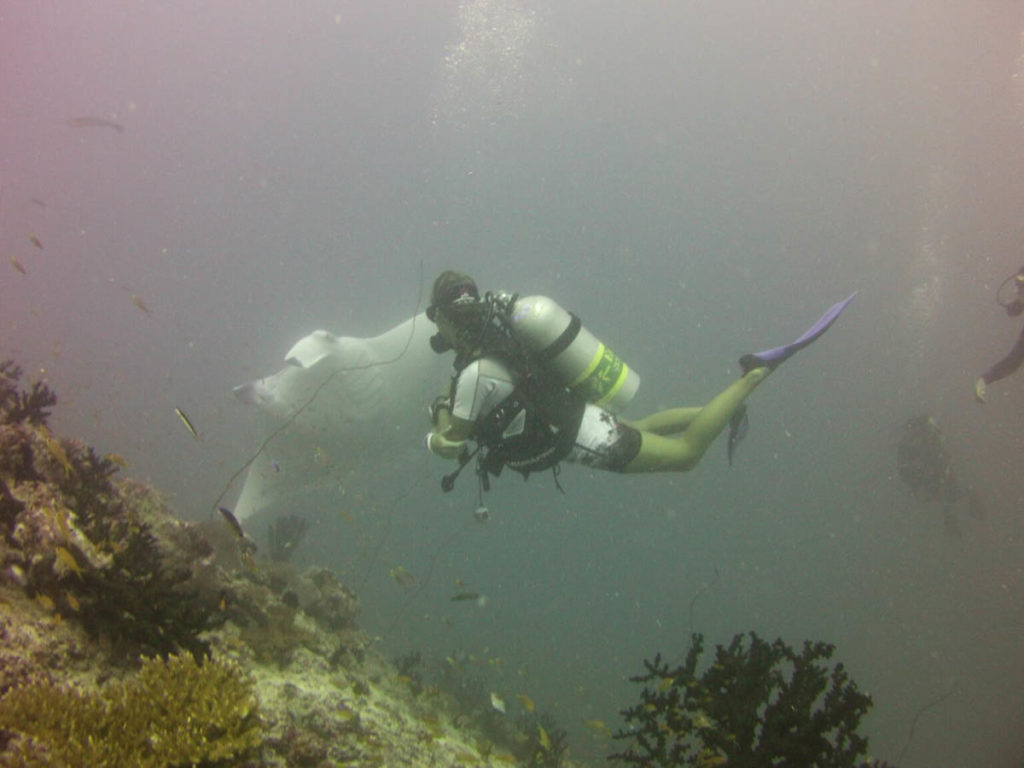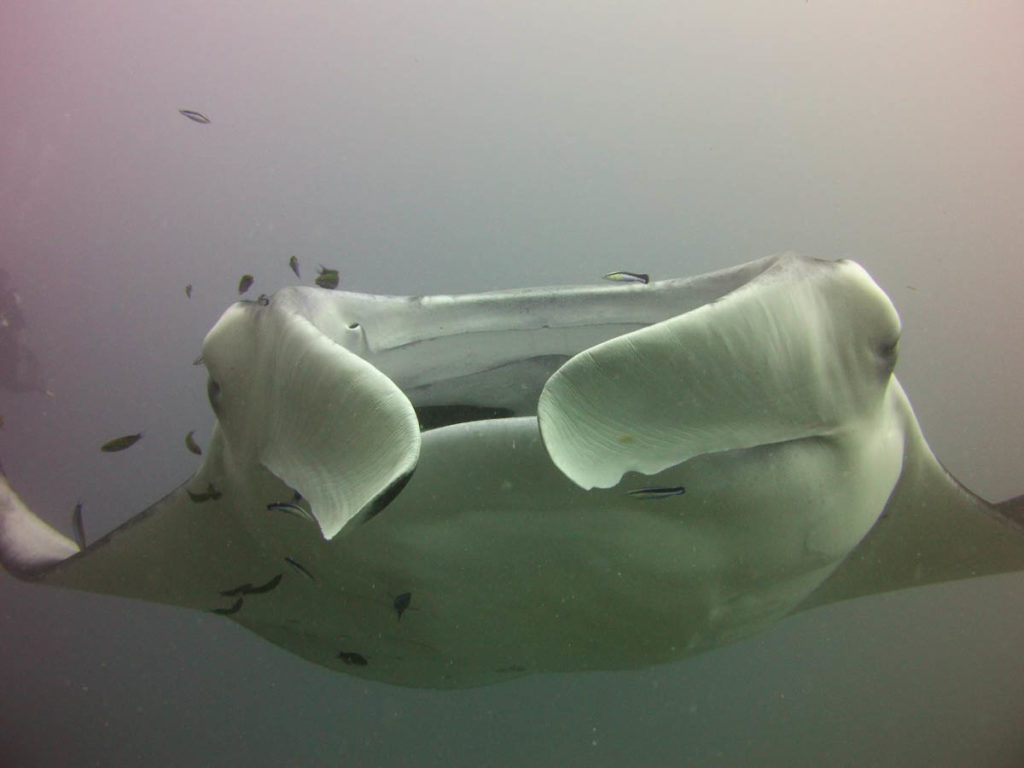Manta Cleaning Station – Practice Code of Conduct. Get The Best Experience
Cleaning stations are found on most tropical reef systems, and they are associated with outcrops and large coral blocks where the inhabitants are mostly cleaner species like wrasse, butterflyfish, shrimps and gobies that create a symbiosis (mutualism) with bigger animals. In this relationship, both the cleaner and host can take benefits: the cleaners feed on the small parasites who live on the host’s bodies hiding themselves inside mouths, spiracles, gills, while the host is getting cleaned. When manta rays are not feeding or cruising, they are often found hovering around cleaning stations. For filter feeding animals like the manta rays, which spend much of their time swimming around with their mouths wide open, particles of food and detritus become lodged in their gills. Fishes like manta rays do not have any necessary tools with which to clean themselves, so instead, they have found a group of animals that can do the job for them.
How do mantas behave in cleaning station?
Manta rays visit these areas daily and they can spend hours there. It’s understandable that females spend more time on a cleaning station than a male, just to be sure it is perfectly cleaned Once they are at the cleaning station, mantas start moving in slow circles above the main rock and whenever they are ready to be cleaned, they open their mouth and flutter their gills. Cleaner fishes now can start their job. If there is a strong current mantas are able to remain stationary above the cleaning stations, positioning themselves head first into the current to gain uplift.
How do divers behave in a cleaning station?
The first important step is making a quiet entry. Splashing and loud entries into the water may scare the animals away. It is important not to jump on the top of the cleaning station, but some meters away and slowly approach from the side being sure not to approach manta rays closer than three meters.
Divers should position themselves to the side of the station and remain close to the seabed. This allows mantas a clear swimming path over the cleaning station. However, mantas are curious and will often approach you. Sometimes they can also move close by the seabed if more cleaner fishes are there. Don’t make sudden movements, don’t try to hold your breath, don’t swim fast away. If this happens remain still and enjoy the show!
Do not try to touch them or chase them.
They will swim away uncleaned and potentially exposed to infections. Your experience will also be over.
Memories and emotions are more important than a picture.
Mantas may also be disturbed by cameras that are held in front of their faces. Don’t use big flashes and, once again, don’t chase them to get the perfect picture.








